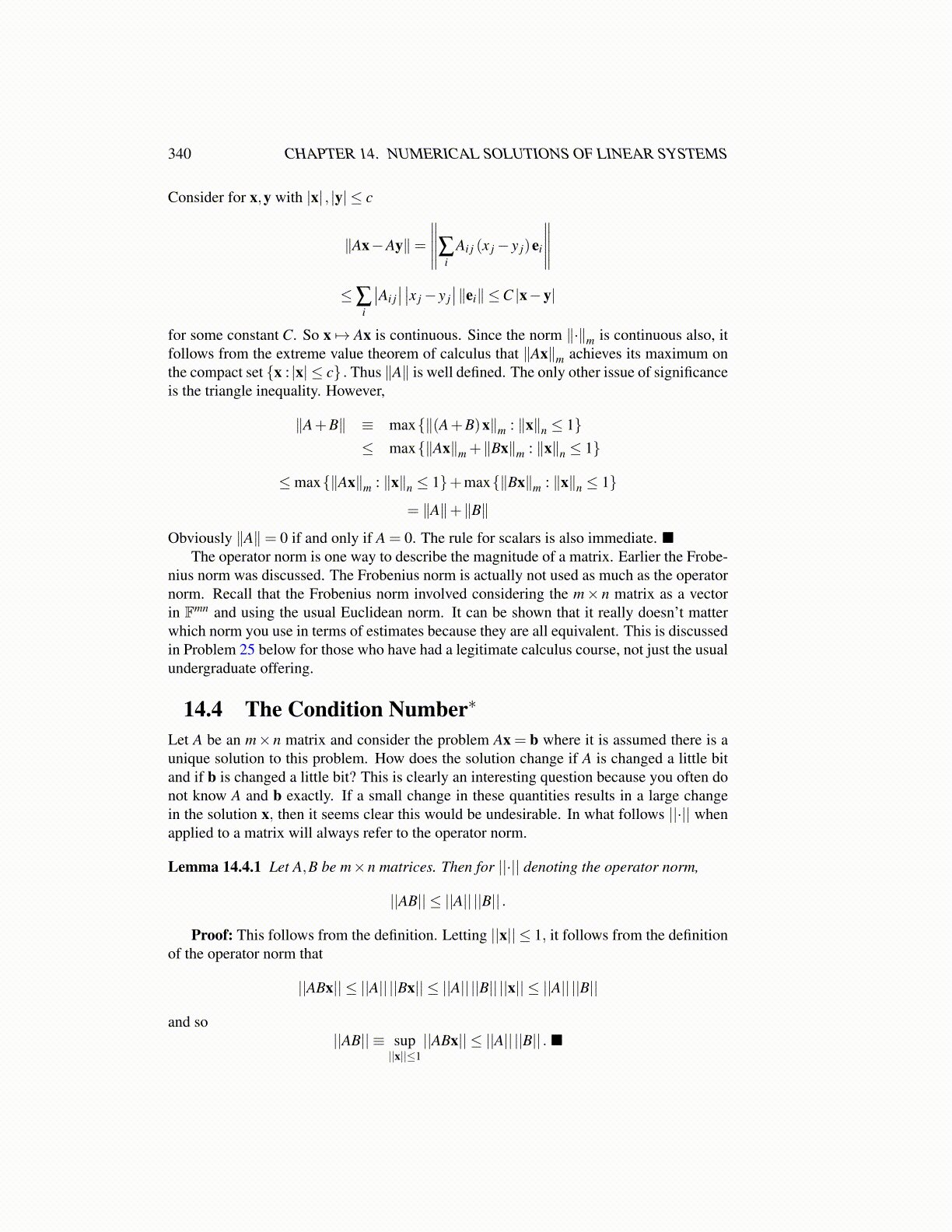
340 CHAPTER 14. NUMERICAL SOLUTIONS OF LINEAR SYSTEMS
Consider for x,y with |x| , |y| ≤ c
∥Ax−Ay∥=
∥∥∥∥∥∑iAi j (x j− y j)ei
∥∥∥∥∥≤∑
i
∣∣Ai j∣∣ ∣∣x j− y j
∣∣∥ei∥ ≤C |x−y|
for some constant C. So x 7→ Ax is continuous. Since the norm ∥·∥m is continuous also, itfollows from the extreme value theorem of calculus that ∥Ax∥m achieves its maximum onthe compact set {x : |x| ≤ c} . Thus ∥A∥ is well defined. The only other issue of significanceis the triangle inequality. However,
∥A+B∥ ≡ max{∥(A+B)x∥m : ∥x∥n ≤ 1}≤ max{∥Ax∥m +∥Bx∥m : ∥x∥n ≤ 1}
≤max{∥Ax∥m : ∥x∥n ≤ 1}+max{∥Bx∥m : ∥x∥n ≤ 1}
= ∥A∥+∥B∥
Obviously ∥A∥= 0 if and only if A = 0. The rule for scalars is also immediate. ■The operator norm is one way to describe the magnitude of a matrix. Earlier the Frobe-
nius norm was discussed. The Frobenius norm is actually not used as much as the operatornorm. Recall that the Frobenius norm involved considering the m× n matrix as a vectorin Fmn and using the usual Euclidean norm. It can be shown that it really doesn’t matterwhich norm you use in terms of estimates because they are all equivalent. This is discussedin Problem 25 below for those who have had a legitimate calculus course, not just the usualundergraduate offering.
14.4 The Condition Number∗
Let A be an m× n matrix and consider the problem Ax = b where it is assumed there is aunique solution to this problem. How does the solution change if A is changed a little bitand if b is changed a little bit? This is clearly an interesting question because you often donot know A and b exactly. If a small change in these quantities results in a large changein the solution x, then it seems clear this would be undesirable. In what follows ||·|| whenapplied to a matrix will always refer to the operator norm.
Lemma 14.4.1 Let A,B be m×n matrices. Then for ||·|| denoting the operator norm,
||AB|| ≤ ||A|| ||B|| .
Proof: This follows from the definition. Letting ||x|| ≤ 1, it follows from the definitionof the operator norm that
||ABx|| ≤ ||A|| ||Bx|| ≤ ||A|| ||B|| ||x|| ≤ ||A|| ||B||
and so||AB|| ≡ sup
||x||≤1||ABx|| ≤ ||A|| ||B|| . ■